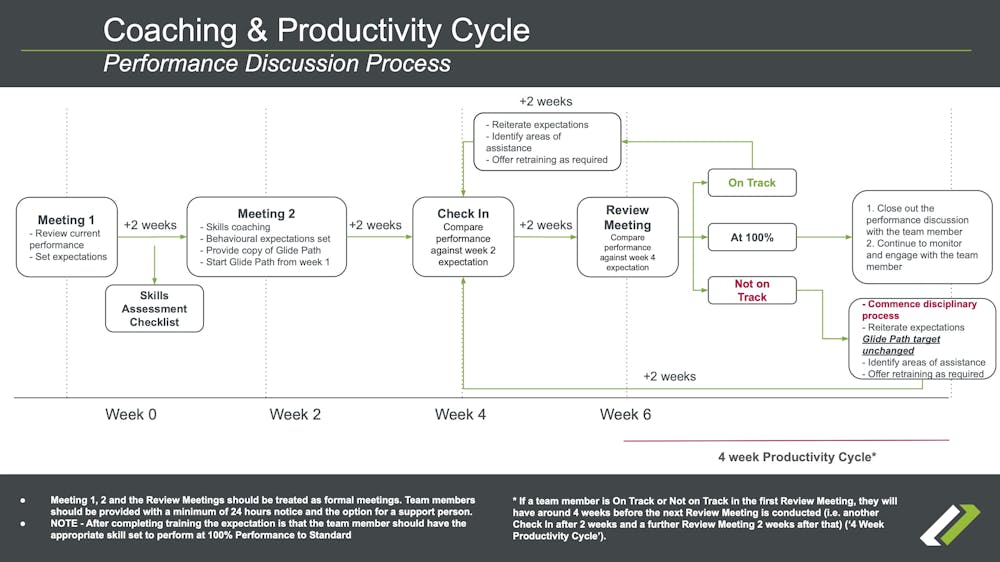The Automation Paradox Strikes Again: Lessons From Woolworths “Amazon Era” Productivity Play
Recent worker strikes at Woolworths’ distribution centers in Australia have reignited concerns over the use of AI-powered productivity systems in the workplace. In early 2024, Woolworths introduced the “Coaching and Productivity Framework,” a new performance management program aimed at monitoring and optimizing workers’ output across warehouses. The program has drawn sharp criticism from warehouse workers for enforcing harsh quotas, increasing stress, and compromising safety. Stalled negotiations between Woolworths and the workers’ union resulted in empty shelves in Woolworths supermarkets across Victoria and New South Wales. This turn of events parallels Amazon’s ongoing challenges where similar technologies have led to burnout and high turnover rates.
The Fantasy Of Idyllic Automation Efficiency Clashes With The Reality Of Workers
Automation that prioritizes efficiency at all costs often exacerbates the very problems it seeks to solve, leaving both employees and businesses worse off. The Woolworths productivity framework exemplifies the automation paradox: As tasks become more automated, human roles become more critical — but also more taxing. Workers at Woolworths’ warehouses report skipped breaks, unsafe work speeds, and feelings of being treated as cogs in a machine. Amazon’s algorithmic management system has faced similar criticism, with workers describing dehumanizing conditions and dangerous expectations.

If you are looking to deploy such tools in your organization, carefully consider the impact on the employee experience (EX). If employees perceive AI tools as a source of mental and physical distress rather than enablement, their motivation and engagement will falter. The more anxiety and frustration they experience, the less likely they are to perform at their best. Forrester’s data says about half of the global workforce is somewhere on the burnout spectrum and 19% are in the “red zone,” which is defined by high burnout and low engagement. And one of the big factors contributing to anxiety around job security is AI: some 59% of workers fear they’ll lose their job to AI in the next 10 years and 86% feel someone else will lose their job to AI.
The tech is not the problem: It’s the understanding, skills, and ethical awareness (also known as the artificial intelligence quotient, or AIQ) of employees that doesn’t match the moment, with only 14% of global individual contributors scoring high on AIQ. If you invested too little in AIQ readiness training in 2024, you must fix that in 2025. To get employees to a good place, think beyond the tech and mature your HR efforts. Use direct employee feedback to focus on improving issues that impact employees’ immediate well-being, such as salaries, benefits, and work schedules.
The Financial Implications Of EX And Customer Experience Blunders
Employees shape customer experience (CX), which shapes your brand. This is true not only of businesses with frontline workers but also those where the people are behind the scenes. Woolworths’ empty shelves during strikes illustrate how worker dissatisfaction can directly impact customers. At Amazon, algorithmic management has led to high attrition and operational errors, such as delayed shipments, which erode customer trust. Woolworths and Coles’ use of surveillance technologies — both for employees and shoppers — also contributes to a broader perception of distrust, making customers feel alienated.
Trust is not abstract; it’s specific and measurable. An individual’s level of trust in a company drives revenue-generating consumer behaviors, such as likelihood of purchasing from a company again, preferring a company over its competitors, trying unrelated products and services, and sharing personal data. Forrester’s data says that 29% of customers will permanently stop doing business with a company after seeing news about poor employee working conditions, and 27% prefer doing business with a competitor who seems to have more ethical workplace conditions.
Both Woolworths and Amazon aimed to increase efficiency and profitability with their respective systems but saw significant fallout. Amazon’s high turnover rates have increased its recruitment and training costs, while Woolworths has already lost $50m in grocery sales since the start of the workers strikes on November 21st, 2024.
Recommendations To Mitigate Risks And Ensure Success
Poor employee and partner experience have ripple effects across your entire value chain (both upstream and downstream), creating gaps that directly affect CX. Make supply chain risk management a top priority. Architect an ecosystem to connect, extend, and bridge EX and CX. By creating an experience architecture, you’ll enable the right capabilities at the right moments that empower employees to deliver great customer experiences. Lastly, establish KPIs that allow you to track progress toward your EX and CX objectives over time. Use data analytics tools to monitor customer and employee feedback, identify areas for improvement, and optimize your CX strategies accordingly.
Avoid these negative financial impacts for your own organization:
- Rising operational costs: High turnover, workplace accidents, and disrupted supply chains add hidden costs to any efficiency initiative. Are you ready to account for these in your projections?
- Lost revenue from CX failures: Every disruption in your customer journey — from stock shortages to late deliveries — chips away at revenue and market share. How resilient is your system to these risks?
- Long-term brand devaluation: A damaged reputation has far-reaching consequences, from decreased investor confidence to dwindling customer loyalty. Can your brand afford to lose the trust it’s worked so hard to build?
